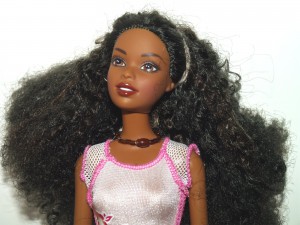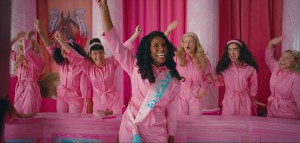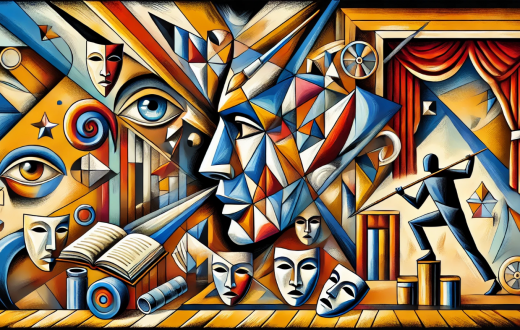We released an article about Why Diversity Matters In Storytelling. This was based on a spectrum geared toward adults. Now, we’re going to talk about the impact of diversity and inclusivity in children’s entertainment and how this creates new opportunities for child actors.
When children are exposed to a variety of different cultures and perspectives, it expands their understanding of the world at large and helps them develop emotional maturity, tolerance and respect for differing viewpoints. Media programs that encourage diversity can help establish confidence in people who may feel out of place in their native environments.
Children’s entertainment has the power to shape attitudes and beliefs, and promote positive social change. By portraying diverse characters and stories, children’s media can challenge stereotypes, reduce prejudice and promote social justice. This can have a lasting impact on how children view themselves and others, and help to create a more inclusive society.
So let’s talk about the economic and commercial advantages to creating diverse and inclusive children’s entertainment. As demographics continue to shift and evolve, there’s a growing demand for media that reflects this diversity. Companies that prioritize diversity and inclusion in their content are more likely to appeal to a wider audience and generate greater revenue.
Economic and Commercial Advantages to Creating Diverse and Inclusive Children’s Entertainment
There are four points:
1. It can expand the potential audience for a product or brand. By catering to a diverse audience, companies can increase their customer base and reach new markets. A more inclusive product can appeal to a wider range of people and generate greater revenue.
2. A brand that values diversity and inclusivity can be seen as socially responsible, forward-thinking and relevant. This can increase customer loyalty.
3. By incorporating different perspectives and experiences, creators can develop fresh and original ideas that stand out from competitors.
4. There’s a growing demand for diverse and inclusive content from consumers, particularly from younger generations who are more socially aware and expect greater representation and inclusivity. Brands that fail to recognize this demand risk losing relevance and market share.
Brands want to see money, and what better way to sniff out the dollars than to appeal to a broad, loyal audience?
Enter Barbie
Issa Rae in Barbie,
Courtesy Warner Bros. Pictures/Courtesy Warner Bros. Pictures | © 2022 Warner Bros. Entertainment Inc. All Rights Reserved
Did you know that the Barbie doll has evolved significantly over time to become more inclusive and reflective of diverse cultures, body types and abilities? Things like hearing aids, colorful prosthetic limbs and skin conditions are now a part of the Barbie line.
And not too long ago, Mattel introduced the Barbie Fashionistas line which includes dolls with different body types, including tall, curvy and petite. This was a significant departure from the classic Barbie’s unrealistic proportions and has been praised for promoting body positivity and inclusivity.
Mattel went even further than physical looks — they released dolls with different career options to better reflect the diverse aspirations of young girls. This includes dolls in science, technology, engineering, and mathematics (STEM) fields, as well as dolls in traditionally male-dominated professions such as politics and aviation.
Onto the entertainment portion of this article.
Barbie movies date back to 2001, with the release of the first animated film, Barbie in the Nutcracker. Since then, the Barbie movie franchise has grown to a multitude of films that feature Barbie in a variety of roles and adventures.
Speaking of adventure, the Barbie movie franchise has also expanded to include films that are based on popular franchises such as Starlight Adventure and Spy Squad. These films combine the positive values of the Barbie brand with exciting action and adventure to appeal to a wider range of audiences.
 The Impact of Diversity and Inclusivity
The Impact of Diversity and Inclusivity
With Mattel keeping up with the times, it’s given the brand the opportunity to collaborate with prominent figures in the fashion and entertainment industries to create dolls that represent a wide range of women. For example, Mattel has partnered with Olympic gymnast Gabby Douglas, plus-size model Ashley Graham and British fashion designer Vivienne Westwood.
Because of this, Mattel has been able to keep the Barbie brand relevant and inclusive for over six decades.
Barbie has spearheaded partnerships with organizations that promote diversity and inclusiveness, such as the NAACP and the Trevor Project. through these partnerships, Barbie has endeavored to raise an awareness of important social issues and promote positive change in society.
Barbie’s impact on diversity and inclusivity in children’s media has been significant and enduring. By promoting positive messages and representation for young girls, Barbie has helped to shape social attitudes and promote positive change in society.
How Do Children Influence Their Parents to Purchase Items?
Children can be powerful influencers when it comes to their parents’ purchasing decisions.
Pester Power: Children may use their persistent requests and demands, commonly known as “pester power,” to convince their parents to buy items they want. Children may persistently ask for a particular toy or treat, creating a sense of urgency and desire that may sway their parents’ purchasing decisions. I’ve fallen for this many times and I’m not proud of it.
Emotional Appeal: Children may appeal to their parents’ emotions by expressing how much they want a particular item and how it will make them happy. This emotional appeal can create a sense of guilt or obligation for parents to purchase the item for their children. Yep. I’ve been there.
Peer Pressure: Children may be influenced by their peers, and this can also have an impact on their parents’ purchasing decisions. If a child’s friends have a particular toy or item, they may want it too, and parents may feel pressured to buy the item to ensure their child doesn’t feel left out or different.
Advertising and Marketing: Children are exposed to advertising and marketing messages through various mediums such as television, social media and websites. These messages can be persuasive and create a desire for children to own certain products. Children may then ask their parents to purchase these items, and parents may feel pressure to comply with their child’s wishes.
Convenience: Parents may also be influenced by their children’s preferences for convenience. For example, if a child prefers a particular brand of food or snack, parents may choose to purchase that brand to avoid a tantrum or argument.
There’s no doubt that diversity and inclusivity in children’s entertainment can be a powerful driver of revenue and profitability for companies. The children’s media industry encompasses a wide range of products and services, including books, TV shows, movies, video games, toys and more.
New Opportunities for Child Actors
The push for diversity and inclusivity in the entertainment industry can create new opportunities for child actors from underrepresented backgrounds. By taking on diverse and inclusive roles, child actors can expand their casting opportunities, gain greater visibility, take on more complex and nuanced roles, promote representation and have a positive impact on the industry and society.
Here’s how:
Expanded casting opportunities: As the entertainment industry becomes more diverse, there are more casting opportunities for child actors from underrepresented backgrounds. This means that children who might not have had a chance to audition for certain roles in the past now have a better chance of being seen and considered for those roles.
Greater visibility: With the rise of streaming platforms, child actors who are cast in these productions have the opportunity to gain greater visibility and recognition for their work. This can lead to more career opportunities down the line.
More complex roles: Diverse and inclusive content often features more complex roles. This means that child actors have the chance to take on more challenging and interesting roles that can help them grow as performers.
Opportunities to promote representation: Child actors have the opportunity to promote. This can help to inspire other children to pursue careers in entertainment.
Potential for impact: When child actors are cast, they have the opportunity to have a positive impact on the industry and society as a whole. By portraying diverse characters and telling diverse stories, these actors can help to promote empathy, understanding and acceptance among audiences.
The significance and benefits of diversity and inclusion to young children’s entertainment are obvious. Not only is it a major social value for children, it also provides significant financial opportunities for companies and opens new possibilities for child actors from diverse backgrounds. As the entertainment landscape continues to change, it’s imperative that diversity and inclusion remain a top priority.








